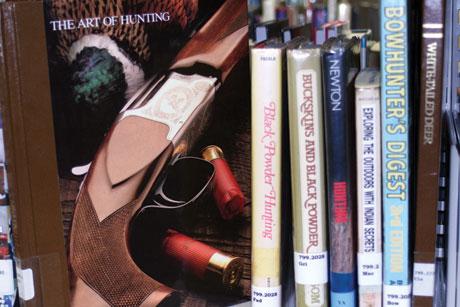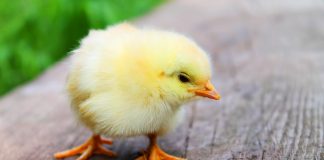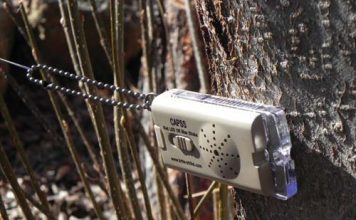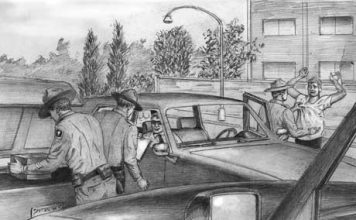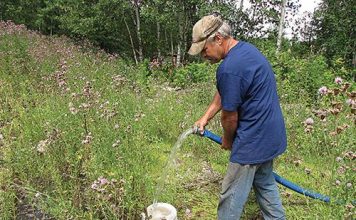 |
|
| Issue #119 • September/October, 2009 |
For a great many rural folk, big game hunting season is a high pointoften the annual high pointof their involvement with firearms. In some locales, the big game in question may be a moose or an elk, or even a bear, though the latter is certainly not the favored meat for the larder. In most of America, though, big game hunting means deer season!
It might be a big Western mule deer. It might be one of those cute little Texas blacktails. For most of my own life, and still, the likeliest quarry was the Eastern whitetail. They all taste good. They all bring natural, chemical-free protein to your table.
Whatever your quarry, the real trick of filling your tag during hunting season is to start your preparation well ahead of opening day.
If you want to have a successful hunt instead of just a pleasing series of long walks in the woods while carrying a firearm (not that there’s anything wrong with the latter), it would be a great idea to plan your strategy well in advance, and make sure that all contingencies have been provided for. This goes doublemaybe it goes tenfoldfor those who are new to the whole hunting thing. New to the gun…new to the wilderness…new to the stalking and harvesting of wild game.
Strategy
Start early. Develop a plan. Study the quarry. Analyze the terrain where you plan to hunt. Be prepared.
Let’s look at some of those preparations, and why they’re important.
Know thy turf. Topographical maps and, today, even Google Earth printouts are available to you. Print ’em out, put ’em in those plastic 8½x11-inch transparent plastic sleeves you find in the school supply sections of your local department store (or, if you’re lucky enough to live in the real backwoods, the general store). They’ll lie nice and flat in a backpack or knapsack, and when you need them, they’ll be worth their weight in gold. The plastic will proof them against rain and snow.
A part of that worth is that they’ll help you stay oriented to the areas you’re hunting, and help you to better find your quarry.
A much greater and more important part of that worth is that they will help to keep you from being lost.
Now, it’s axiomatic among us macho hunters that “we never get lost, we just get turned around a little bit, or take the scenic route.” Yeah, and smoking cigarettes is respiratory therapy, by that standard. Let’s be frank here: people get lost in the woods!
And getting lost can kill you.
|
Be able to navigate that turf. Carry a compass. Hell, carry two of them. No, it’s not so you can do a Three Stooges routine with multiple watches trying to tell what time it is. It’s so you’ll still have one compass if you lose the other. People who hunt things more dangerous than deer will tell you “two is one, and one is none.” That’s why they go toward the sound of the guns with more weapons and ammunition than they think they’ll need. It’s wise for you and me to go into unfamiliar places with more direction-finding tools than we think we’ll need.
There ain’t no street signs in the woods or the mountains. And you can never count on finding a “local” you can ask for directions.
We live in the time of GPS. The use of a compact Global Positioning Satellite device doesn’t mark you as a brie-and-chablis yuppie. It marks you as someone smart enough to use every advantage when doing something potentially dangerous to yourself.
Get out there beforehand and learn that turf. Yes, each of us can study the maps and all the rest before we get to the hunting ground, but we don’t know those grounds until we’ve walked them and oriented ourselves. Compare it to what you do for a living: if you’re an MD, you studied your profession in medical school, but you didn’t really learn it until you practiced it on living patients. If you’re a cop, you studied law enforcement in the police academy, but you didn’t really learn it until you patrolled the streets. Same here.
If you can afford to go on a professionally guided hunt, you know that what you’re paying for is the knowledge of the guide who knows the hunting ground. How to get in, how to get out, what’s in there right now, and when it’s likely to be there later. If you’re hunting on your own, you need to know that yourself. Get to that hunting ground at least months beforehand, and walk it, and walk it again, and walk it some more. Learn where the brook and river crossings are (and bear in mind that they might be at different depths and flow speeds during hunting season later). Learn the way in and the way out, and the alternative ways in and ways out. (Think floods, footbridges out, landslides, etc.) Carry binoculars. They’ll let you see things you’d otherwise miss.
While you’re there, if you’re looking (and if you know what to look for; we’ll get to that momentarily) you’ll start picking up on where the deer are, where they drink, where they forage, and where they sleep. Now, bear in mind, once the first shot of opening day of hunting season is fired, those movement patterns will start to change, but knowing them will give you a helluva good start on finding what you’re looking for during hunting season.
Talk to those who know
Somewhere in your community are the hunters who fill out their maximum bag limit every season. These are the masters of their craft to whom you would be wise to apprentice yourself, particularly if you are new to this. They know where the deer are in your area. They know what those particular deer eat. They know where those particular deer like to drink. They know the best times and places to find those deer, and they know the difference between looking for them on opening day, and toward the end of the season when hunting pressure has driven them deeper into their natural cover.
And you’ll be surprised at how many of them will share that knowledge with you.
Not all of them, of course. People are people, and everyone’s different. But a surprising number of hunters who bring home the annual venison are proud of what they’ve learned, and find it pleasing to share that knowledge. If you look hard enough, you’ll find the ones who feel that way, and what you learn from them with an open mind can make the difference between buying hamburger packaged in Styrofoam and cellophane, and eating venison that you harvested from Mother Nature by yourself.
If you have grown up in rural areas, you already know this. If you are new to the “backwoods home lifestyle,” well, you know it now. Ask around the area and you’ll soon find the people we’re talking about. Introduce yourself. Some of them may even offer to take you hunting. Many of them will keep the best areas to themselves, just as ardent fishermen jealously guard their secret, best trout streams, but few of them will begrudge you good advice.
Another resource that is sorely neglected is the local conservation officer. Every state has a fish and wildlife department, and has stationed at least one officer/game warden/game ranger within striking distance of where you live. I’ve met a lot of them in my law enforcement work, since they are indeed law enforcement officers and talk with their peers from other corners of the profession. When I’ve asked them, they’ve been almost unanimous in their surprise that so few people who hunt ask them for advice.
Your local CO (conservation officer, which I’ll use here as a generic term for the job description) spends at least part of his or her time monitoring deer yards (well-populated deer habitat) for the data required by the agency they serve. During hunting season, virtually all of them are reviewing the game animal check stations, a task which uniquely suits them to know where the deer are in any given year, and where the biggest bucks are coming from. They know stuff that you really, really would benefit from knowing.
But most hunters don’t ever ask them.
Now, some conditional branching comes in at this point. Different states’ fish and game commissions have different rules. In areas where the conservation officers may be responsible for stocking trout or pheasant, it is understood that exactly where the game fish or game birds are placed is privileged information. Asking a CO about that sort of thing would be sort of like asking a stockbroker to give you insider trading information. Answering the question could get the officer in trouble, and asking for that information is not what a gentleman would do.
However, we’re talking here about truly wild game. Since the CO has not put the critter there, it’s not so much “insider knowledge.” Just as a police department crime prevention officer will generally answer your questions at a town meeting or Kiwanis Club meeting about crime statistics where you are, the CO in your area will, most probably, be perfectly comfortable answering your questions about the state of the deer herd in the area where you plan to hunt. Indeed, my personal experience is, they will be delighted that someone cared enough to ask.
It’s a simple rule of human affairs. If you ask about something you don’t know, and the person you questioned says, “I can’t answer that,” you’re no worse off than you were before you asked. But if you ask the question and you get an honest answer, you are enlightened.
|
Another good source for you is the butcher who processes deer in the area where you hunt. Every such area has one or more, whether they do meat-cutting full time or only in deer season. The folks who bring in the carcasses generally tell them where they bagged the deer. They now know where the deer are being harvested in recent seasons. And if you ask, they’ll tell you the same thing as the game wardensalmost no one is ever smart enough to ask them about it. By the way, these folks can give you precious tips on where to aim on your quarry, and how to best dress out the animal once you’ve dropped it.
Yet another fount of collective information is the farming community in the area where you plan to hunt. Think about it: who else is out in the field every day, observing the wildlife as they go about the business of planting and harvesting their crops? There is a physician who lives in West Virginia who loves to hunt, and prefers to do it with handguns. He recently harvested his 1,600th handgun-shot deer, and I have no idea how many he has bagged with rifle, shotgun, and bow. He has made a point of getting to know the local farmers who get permits to kill deer that raid their crops. He is doing them a favor. He has sent heaven knows how many tons of venison to homeless shelters. The homeless appreciate the food. The farmers appreciate the reduced toll the deer take on their crops. And he has absolutely proven that farmers know where deer are.
By the way, I learned as a little kid that a lot of farms that are posted “No Hunting” to keep unknown people with guns from shooting their cows by mistake, will cheerfully give legal permission to people to hunt there if those people just come up to the farmhouse, politely introduce themselves and ask permission, and offer to share the venison with the farmer’s family. In law enforcement we call it “professional courtesy,” and it works remarkably well in other elements of everyday life, including hunting on other people’s often deer-rich property. Oh, and did I mention, those farmers who want the crop depredations by deer to be brought to an end, can generally tell you exactly where on the property the deer have been doing the damagehint, hint?
Preparing for the shot
The shot that humanely turns Bambi into venison will be the culmination of the hunt. Successful culminations tend to be the result of exhaustive prior planning. When you have finally found the thing you have been hunting for, you don’t want to blow it now. You want one clean, perfect shot that delivers a quick, humane kill.
It’s largely about compassion. If you have chosen to kill this living thing to take it home and feed your family, you owe it a swift and painless final moment. It’s also about something selfishly practical: if you mortally wound the animal, but it runs far away and dies someplace where you can’t find it before it rots, you haven’t done any good for either you or the animal.
You don’t want to be the bozo who never “sights in” his rifle, never practices with it, and probably couldn’t hit the proverbial bull in the butt with a banjo, and cripple a beautiful animal to leave it to die a horrible and wasteful death. Yet, it is amazing to me that some people still go hunting every year with guns they’ve never fired, rifles they’ve never zeroed in to coordinate point of aim with point of impact, and haven’t the first clue as to where the bullet will strike at 25 yards vis-à-vis 250 yards, and don’t realize that there is such a thing as a curve in a bullet’s trajectory.
Sight in. Study things like bullet drop. And, for heaven’s sake, practice! Particularly on a moving animal, hunting marksmanship is a precise and corrosion-prone skill. I say that advisedly. It’s not really a “perishable” skill as some people say, because the skill doesn’t really die if it isn’t refreshed. But it can damn sure get rusty if you haven’t kept up to date at the time you need to press that trigger smoothly and evenly back while holding your sight picture on a moving target that doesn’t want to be shot.
It may take you weeks of hunting to finally get a shot at the quarry. All that time will be maddeningly, frustratingly wasted if your marksmanship skills are not up to the task of making this shot, perfectly, and right now within a narrow window of opportunity. The more fresh and sharp your marksmanship skills are, the less likely you are to have a bitter disappointment at the end of that long, long hunt.
You also need to have firm internal commitment as to when not to shoot. I think I can best explain this with two short stories from two separate hunts in Africa, that Nirvana for sport hunters.
The year was 1987. It was my first safari. In the Eastern Transvaal of the Republic of South Africa, my ten-year-old daughter and I were happily taking pictures of the animals. We were each wearing loaded handguns for personal protection (yes, it was legal and yes, the kid was amply qualified and under supervision she didn’t really need), and we had high-powered hunting rifles in the back of the four-wheel-drive vehicle. We were hunting with my friend Cameron Hopkins, a trophy hunter, who was off with one of the other guides at the time.
Andre Roux, our guide (who would later become one of the most famous professional hunters on the Dark Continent) confided to me that we had a problem. It seemed that the kid and I just wanted to take pictures and Cameron only wanted to shoot Rowland Ward Record Book heads of game. However, there were safari staff to feed, and we were in the bush without refrigeration, and if we didn’t shoot some fresh meat today, all of us would be eating dried mutton and mealie-pop (the South African equivalent of Southern U.S. grits) for supper that night. No problem, I replied, we’ll just shoot the next legal antelope that comes into view.
|
In minutes, Andre pulled the vehicle to a soft stop and silently pointed to an impala that appeared to be about a football field away. “I’ll get the rifle from the back,” he whispered. I whispered back, “Nah, I can get him from here.” I was carrying a particularly accurate Smith & Wesson Model 629 revolver with four-inch barrel, charged with super-hard 320 grain .44 Magnum SSK bullets that my friend Bill Grimmett had handloaded to red-line velocity. I took a solid hold and aim, rolled the double action trigger back smoothly, and dropped the impala with a bullet through the spine.
That night, we feasted on fresh impala steaks. Andre paced it off to 120 yards; my legs were just a bit longer, and I made it 117 paces.
Fast-forward to a year later, 1988. I was on my second safari, this time in the Upper Transvaal with a different guide. My hunting gun that time was a blue steel version of the one I’d used the year before, a four-inch barrel S&W Model 29 made of blue steel instead of stainless. The guide had brought me about 120 yards from a Rowland Ward record class “blue gnu,” the stately blue wildebeest. “You must shoot it,” he whispered.
I knew a few things that I had to process along with his command. My blue .44 Magnum this year wasn’t as accurate as the stainless I’d hunted with the year before. Yes, I could pretty much guarantee a lung shot at that distance, but no, I couldn’t guarantee a heart or spine shot. The wildebeest has a deep chest and incredibly large lung capacity for its size, one of the few animals that you can’t count on killing in a short time frame with a lung shot. My Professional Hunter had seen lung-shot wildebeest run a mile. We were on the edge of some heavy mopane bush, and if he got in there a mile, even the Shangaan tribesmen who were tracking for us might not have found him, and if they had, we’d need a cargo helicopter to get the carcass out.
“We have to get closer,” I whispered back.
We tried to. It didn’t work. The massive beast lifted his head as he caught our scent, looked directly at us, and bolted. We never saw him again.
Two confrontations with the quarry, three steps different in distance, a year apart. One ended with a blandly ordinary animal by trophy hunter standards brought down successfully with one of the shots I’ve been most proud of in going on six decades of being a shooter. The other ended with a magnificent trophy animal that ran off without a shot fired because I didn’t think I could do it right.
You wanna know something? I’m prouder of not firing at the wildebeest in 1988 than I am of shooting the impala in 1987.
|
If you’re desperate, you do what you gotta do. If we had been stranded without food and starving, I would have taken the shot at the wildebeest even though I wasn’t sure under the circumstances that I could make a clean kill. But, I wasn’t. Hell, we weren’t even starving when I shot the impala the year before, but when I held the sights on the top edge of its spine and rolled that trigger back, I knew that if I missed low I’d still drop the impala with a lung or heart shot, and if I missed high it wouldn’t hurt him at all. That was the difference.
Only fire when you’re certain you can make the hit. Know the difference. The day before shooting the impala, Cameron Hopkins and I had sighted in at 100 paces, and that sweet S&W had put two 320-grain bullets into snake eyes. I knew the gun, the ammo, the sights, and I could do it together. The day a year later when I let the wildebeest walk, I couldn’t be sure.
Crippling an animal with a bad hit and leaving it to die a painful death is something that will give you a guilt trip long enough to qualify for frequent flier miles. I ain’t goin’ there, and I don’t think you want to, either.
Being able to deliver the shot means practice. Yes, I know, this is the worst time in the last half century for price and availability of hunting ammo or reloading components. But, you gotta buy enough to practice with, and to guarantee you’ll have enough in the future. As costly as it may seem, it’s still a whole lot cheaper than the price of prime meat in a market, and when you figure out what the venison’s worth, it’s still a good investment.
Plan for your hunt. Keep safety first. Be fair to the animal and to yourself. The sooner you start laying the groundwork, the more likely it becomes that your endeavor will be successful.


